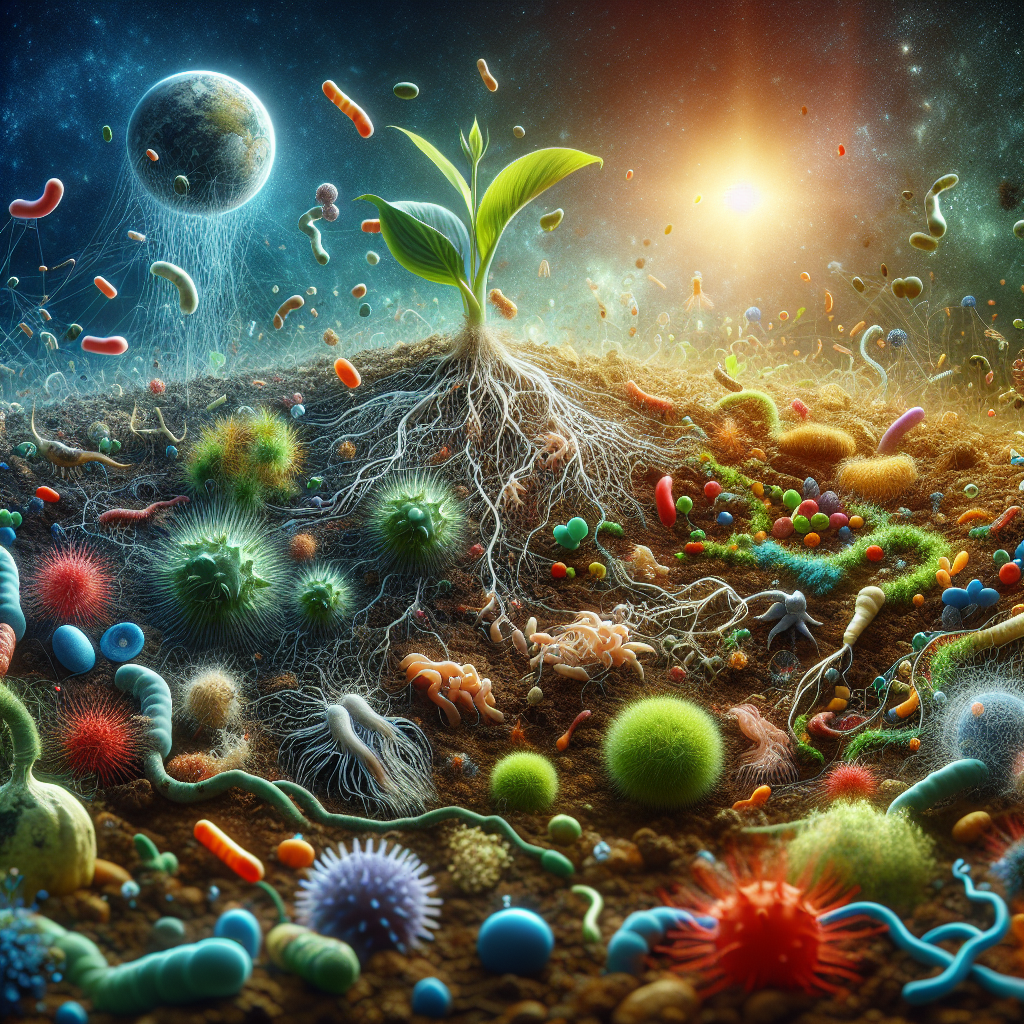Uncovering the Hidden Heroes: Embracing the Diversity of the Soil Food-Web for Thriving Natural Growth
- Thomas Grima
- Sep 6, 2024
- 2 min read
Welcome to the fascinating world beneath our feet, where a bustling community of microorganisms shapes the very foundation of life on Earth. Today, we delve into the intricate web of relationships that exist in the soil – the Soil Food-Web, where a balanced ecosystem thrives on the contributions of key players such as bacteria, fungi, and other microorganisms.
Introduction to the Soil Food-Web
Imagine a world within a world, where tiny organisms work tirelessly to break down organic matter, recycle nutrients, and create a vibrant environment for plants to flourish. This is the essence of the Soil Food-Web – a complex network of interactions that sustains life below the surface.
Role of Bacteria, Fungi, and Other Microorganisms
Bacteria: These microscopic powerhouses play a pivotal role in soil health by decomposing organic matter and releasing essential nutrients. From nitrogen-fixing bacteria to beneficial microbes that fend off pathogens, bacteria form the backbone of a healthy soil ecosystem.
Fungi: Often overshadowed by bacteria, fungi bring their own set of skills to the table. From forming intricate mycorrhizal networks that enhance nutrient uptake in plants to breaking down complex compounds, fungi are the unsung heroes of the soil food-web.
Other Microorganisms: From protozoa to nematodes, a diverse range of microorganisms adds layers of complexity to the soil food-web. Each tiny creature has a role to play – whether as a predator, decomposer, or symbiont, contributing to the overall balance and resilience of the ecosystem.
Benefits of a Diverse Soil Ecosystem
A flourishing soil food-web is not just a matter of scientific curiosity – it holds the key to sustainable and productive agriculture. Here are some benefits of nurturing a diverse soil ecosystem:
Nutrient Cycling: Microorganisms break down organic matter into forms that plants can absorb, ensuring a steady supply of nutrients essential for growth.
Disease Suppression: Beneficial microorganisms can outcompete pathogens, reducing the incidence of plant diseases without the need for synthetic pesticides.
Improved Soil Structure: Fungal hyphae and bacterial secretions help bind soil particles together, enhancing soil structure and water retention.
Increased Resilience: A diverse soil food-web is more resilient to environmental stressors, such as drought or extreme temperatures, ensuring that plants have a buffer against adverse conditions.

Embracing the Diversity
As we uncover the hidden heroes of the soil food-web, it becomes clear that a thriving natural growth starts from the ground up. By fostering a diverse and vibrant soil ecosystem, we not only support the health of our plants but also protect the delicate balance of nature itself.

So, the next time you dig into your garden or walk through a forest, remember the bustling world beneath your feet – a world where bacteria, fungi, and a multitude of microorganisms work tirelessly to create the fertile ground that sustains life. Let's celebrate the diversity of the soil food-web and continue to nurture the hidden heroes that make our planet green and vibrant.
In conclusion, the soil food-web is a testament to the intricate connections that underlie the natural world. By understanding and embracing the diversity of microorganisms that dwell beneath our feet, we can truly unleash the potential of sustainable and regenerative agriculture.
Let's dig deep, both literally and metaphorically, to uncover the hidden wonders of the soil food-web and embark on a journey towards a greener, healthier planet!




Comments